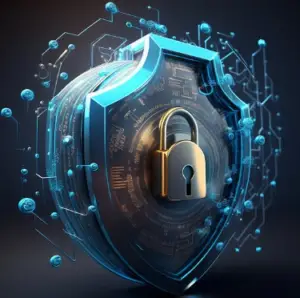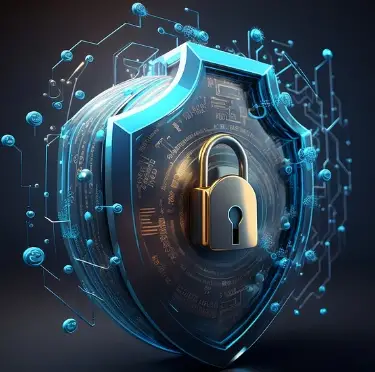Cybersecurity: Heightened Focus and Innovation
In an increasingly interconnected world, “The need to protect.” digital assets has never been more crucial. Cybersecurity, once an obscure concern, is now a central focus for governments, businesses, and individuals. With cyber threats evolving unprecedentedly, the focus on cybersecurity has intensified, driving innovations that aim to outpace adversaries. This article delves into the heightened focus on cybersecurity and the cutting-edge innovations shaping the future of digital defense.
The Rising Importance of Cybersecurity

Cybersecurity has transitioned from an IT issue to a national security priority. The proliferation of digital technologies has expanded the attack surface, making robust cybersecurity measures indispensable. Recent high-profile breaches have underscored the vulnerability of even the most fortified systems, pushing cybersecurity to the forefront of organizational strategies.
Understanding Cyber Threats
Cyber threats come in various forms, each with the potential to inflict significant damage. From ransomware attacks that hold data hostage to phishing schemes that deceive individuals into divulging sensitive information, the landscape is fraught with dangers. As threat actors become more sophisticated, understanding the nature and mechanics of these threats is crucial for developing effective countermeasures.
Innovations in Cybersecurity Technologies
The arms race between cyber defenders and attackers has spurred remarkable innovations. Artificial Intelligence (AI) and Machine Learning (ML) have emerged as game-changers, enabling the development of predictive analytics and automated threat detection systems. These technologies can identify patterns and anomalies that might elude human analysts, offering a proactive defense against potential breaches.
The Role of AI and Machine Learning in Cybersecurity
AI and ML are revolutionizing cybersecurity by improving threat intelligence, streamlining incident response, and automating routine security tasks. AI-powered systems can rapidly and accurately detect and respond to threats by analyzing large volumes of data in real time. Machine learning algorithms, which are trained on historical attack data, can predict future threats and suggest preventive measures, making them invaluable tools in the cybersecurity arsenal.
Blockchain Technology: A New Frontier in Cybersecurity
Blockchain technology, known for its role in cryptocurrency, is making inroads into cybersecurity. Its decentralized nature and cryptographic security make it an ideal solution for protecting sensitive data and ensuring the integrity of transactions. Blockchain can provide tamper-proof records, reducing the risk of data manipulation and enhancing the transparency and security of digital interactions.
Zero Trust Architecture: Redefining Network Security
The traditional security model of “trust but verify” is giving way to Zero Trust Architecture (ZTA), which operates on the principle of “never trust, always verify.” ZTA eliminates implicit trust and continuously validates the identity and integrity of users and devices. This approach minimizes the risk of insider threats and lateral movement within the network, offering a more robust defense against modern cyber threats.
Cloud Security: Protecting Data in the Cloud

As more organizations migrate to cloud environments, securing data in the cloud has become a top priority. Cloud security encompasses a range of measures designed to protect data, applications, and services hosted in the cloud. This includes encryption, access controls, and continuous monitoring to detect and mitigate threats. The shared responsibility model between cloud service providers and customers underscores the need for collaborative efforts to ensure cloud security.
The Human Factor in Cybersecurity
Despite technological advancements, human error remains a significant vulnerability. Cybersecurity awareness training and a culture of security are essential to mitigating risks posed by phishing attacks, weak passwords, and other human-related issues. Empowering employees with the knowledge and tools to recognize and respond to cyber threats is a critical component of a comprehensive cybersecurity strategy.
Cybersecurity Legislation and Regulations
Governments worldwide are enacting stringent cybersecurity laws and regulations to protect critical infrastructure and sensitive data. Compliance with these regulations, such as the General Data Protection Regulation (GDPR) in Europe and the Cybersecurity Maturity Model Certification (CMMC) in the United States, is mandatory for organizations handling personal and sensitive information. These regulatory frameworks aim to enhance security practices and foster a more secure digital ecosystem.
The Future of Cybersecurity: Emerging Trends and Technologies
“The future of cybersecurity is being influenced by emerging technologies and changing threats.”Quantum computing, while posing potential risks, also offers opportunities for creating advanced cryptographic methods. Combining cybersecurity with other fields like behavioral science and economics is giving us fresh perspectives on threat detection and response. As cyber threats keep evolving, staying ahead will require constant innovation and adaptation.”
Implementing a Comprehensive Cybersecurity Strategy
A robust cybersecurity strategy encompasses multiple layers of defense, including preventive, detective, and corrective measures. This involves regular risk assessments, the implementation of security best practices, and the adoption of cutting-edge technologies. Collaboration between different stakeholders, including government agencies, private sector organizations, and academia, is vital to creating a resilient cybersecurity ecosystem.
Cybersecurity in the Age of the Internet of Things (IoT)
The Internet of Things (IoT) has introduced new security challenges due to the sheer number of connected devices and the diversity of their functions. Securing IoT devices requires addressing vulnerabilities at both the device and network levels. This includes ensuring secure device configurations, implementing robust encryption protocols, and conducting regular security audits to identify and remediate potential threats.
Cybersecurity for Small and Medium-Sized Enterprises (SMEs)
Small and medium-sized enterprises (SMEs) are often targeted by cybercriminals because they are perceived to have less robust security measures. measures. However, SMEs can enhance their cybersecurity posture by adopting cost-effective solutions such as cloud-based security services, employee training programs, and implementing basic security controls. Ensuring the protection of digital assets is critical for the sustainability and growth of SMEs in a digital economy.
Cybersecurity and Artificial Intelligence: A Symbiotic Relationship
Artificial Intelligence (AI) plays a dual role in cybersecurity. While it enhances defense mechanisms, it also poses risks as cybercriminals leverage AI to develop more sophisticated attacks. Understanding this symbiotic relationship is essential for developing AI-driven security solutions that can outsmart adversaries. Continuous research and development in AI for cybersecurity will be crucial in maintaining a defensive edge.
The Economic Impact of Cybersecurity
The economic ramifications of cyber attacks are profound, with businesses facing significant financial losses, reputational damage, and operational disruptions. Investing in cybersecurity is not merely a defensive measure but a strategic imperative that can save organizations from costly breaches. Quantifying the return on investment (ROI) for cybersecurity initiatives helps in making informed decisions and securing budget allocations for security programs.
Cybersecurity Workforce Development

The demand for skilled cybersecurity professionals is outpacing supply, leading to a critical talent shortage. Addressing this gap requires targeted efforts to attract and retain talent, including educational programs, certifications, and professional development opportunities. Fostering a diverse and inclusive cybersecurity workforce will enhance innovation and resilience in the face of evolving threats.
Public-Private Partnerships in Cybersecurity
Collaboration between public and private sectors is essential for addressing the complex challenges of cybersecurity. Public-private partnerships facilitate information sharing, joint research initiatives, and coordinated response efforts during cyber incidents. These collaborations leverage the strengths and resources of both sectors to build a more secure digital environment.
Ethical Hacking: A Proactive Approach to Cybersecurity
Ethical hacking, or penetration testing, involves simulating cyber attacks to identify and fix vulnerabilities before malicious actors can exploit them. This proactive approach helps organizations strengthen their defenses and improve their overall security posture. Ethical hackers play a crucial role in uncovering weaknesses and providing actionable recommendations to enhance security measures.
Cybersecurity Education and Awareness
Raising cybersecurity awareness among the general public and within organizations is vital for fostering a security-conscious culture. Educational initiatives, public campaigns, and training programs can equip individuals with the knowledge and skills to protect themselves and their organizations from cyber threats. Building a collective awareness of cybersecurity helps in creating a more resilient digital society.
Incident Response and Recovery
A well-defined incident response plan is essential for minimizing the impact of cyber attacks. This involves detecting, containing, and eradicating threats, followed by recovery and lessons learned. Effective incident response requires coordination among various teams and stakeholders, clear communication channels, and regular drills to ensure readiness in the face of an actual incident.
Cybersecurity for Critical Infrastructure
Protecting critical infrastructure, such as power grids, water supply systems, and transportation networks, is paramount to national security. These systems are increasingly targeted by cyber adversaries, necessitating robust security measures. Implementing advanced threat detection and response systems, along with continuous monitoring, can safeguard critical infrastructure from cyber-attacks.
Privacy and Data Protection
In an era of ubiquitous data collection, protecting personal and sensitive information is a fundamental aspect of cybersecurity. Privacy and data protection regulations mandate organizations to implement stringent security controls to safeguard data. Encryption, anonymization, and access controls are key measures to ensure the confidentiality and integrity of data.
Cybersecurity Challenges in Healthcare
The healthcare sector faces unique cybersecurity challenges due to the sensitive nature of patient data and the criticality of healthcare services. Protecting electronic health records (EHRs), medical devices, and healthcare networks requires a comprehensive approach that includes risk assessments, employee training, and the implementation of advanced security technologies.
The Role of Government in Cybersecurity
Governments play a pivotal role in setting cybersecurity policies, standards, and regulations. They also provide support through funding, research initiatives, and public awareness campaigns. Government agencies collaborate with the private sector and international partners to address global cybersecurity challenges and enhance national security.
Cybersecurity in the Financial Sector
The financial sector is a prime target for cybercriminals due to the high value of financial data and transactions. Financial institutions must implement robust security measures, including multi-factor authentication (MFA), intrusion detection systems (IDS), and continuous monitoring to protect against cyber threats. Regulatory compliance and risk management are also critical components of cybersecurity in the financial sector.
Cybersecurity in the Education Sector
Educational institutions are increasingly becoming targets of cyber attacks, with threats ranging from data breaches to ransomware. Implementing strong cybersecurity measures in schools and universities is essential to protect sensitive student and staff information. This includes regular security audits, employee training, and the adoption of advanced security technologies.
The Future of Cybersecurity Careers
The cybersecurity field offers diverse career opportunities, from threat analysts to security architects. As cyber threats continue to evolve, the demand for cybersecurity professionals will remain high. Pursuing a career in cybersecurity requires a commitment to continuous learning and staying abreast of the latest trends and technologies.
Creating a Cyber Resilient Organization
Building a cyber-resilient organization involves more than just implementing security technologies; it requires a holistic approach that encompasses people, processes, and technology. This includes fostering a security-conscious culture, conducting regular risk assessments, and investing in advanced security solutions. A resilient organization can withstand and recover from cyber-attacks, ensuring business continuity and protecting critical assets.
FAQs
What are the most common types of cyber threats today?
How can AI and Machine Learning enhance cybersecurity?
Why is Zero Trust Architecture important for modern network security?
What role does blockchain play in cybersecurity?
How can small businesses improve their cybersecurity posture?
What are the key components of an effective incident response plan?
Conclusion
The rapidly changing cybersecurity landscape requires constant watchfulness, innovation, and teamwork.. As cyber threats become more sophisticated, the need for heightened focus and cutting-edge innovations is paramount. By leveraging advanced technologies, fostering a culture of security, and promoting public-private partnerships, we can build a more secure and resilient digital world.

